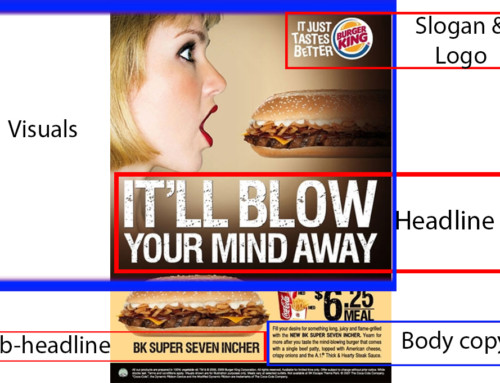Hi guys! How are you? I am fine thank you. So, enough about my financial master plan, the one that will take me to the top. This week we are going to talk about corporate culture. I hear this term being thrown around a lot. I am sure that you have come across managers and chief executive officers talking about it. They say, our culture this, our culture that. We want to have a customer centered culture, a performance culture, a ‘this and that’ culture. Let me ask you a question. When you say out the term corporate culture, what do you mean? Can you put a finger on it? Is it documented and controlled from a strategic level? If it is not these things and if it is something that you just say so as to complete a sentence in your speech to your colleagues at work, then read on. Corporate culture is not only about what goes on in your heart and in your mind. It is a tool that is used in order to gain a competitive advantage over your industrial foes. The key to using culture as a weapon in business lies in matching the culture that you will have created to your organisation’s goals. In this case we want to see if your corporate culture is suitable for marketing as marketing is usually what determines how much income your business will generate. Let’s dig in!
Corporate culture refers to the shared values, attitudes, standards and beliefs that characterise members of an organisation and define its nature. Corporate culture is rooted in an organisation’s goals, strategies, structure, and approaches to labour, customers, investors, and the greater community. As such, it is an essential ingredient in an organisation’s eventual success or failure. (www.inc.com). Corporate culture should not just happen, it’s supposed to be created and managed deliberately.
The Competing Values Framework (artsfwd.org). This framework will help you to establish the type of culture that is in your organisation, and whether or not it is suitable for marketing.
The Competing Values Framework emerged from a series of empirical studies on the notion of organisational effectiveness (Quinn and Rohrbaugh, 1983). These efforts were an attempt to make sense of effectiveness criteria. Quinn and Rohrbaugh (1983) discovered two dimensions of effectiveness. The first was related to organisational focus, from an internal emphasis on people in the organisation to an external focus of the organisation itself. The second dimension represents the contrast between stability and control and flexibility and change. (University of Twente). In the image above the first dimension goes from left to right and the second dimension goes from the bottom to the top. We will use this framework to establish the type of culture that is suitable for marketing by matching the attributes in each of the four quadrants to the modus operandi of an effective marketing organisation.
To see if your corporate culture is suitable for marketing we first have to establish what makes a company a good marketing organisation in the first place. We will use the points that we find as a checklist to see which of the cultures best suit marketing. To that end I will borrow from one of my earlier articles Concepts That You Might Miss In Your Marketing Strategy for 2016 – Marketing Control System, specifically the Marketing Effectiveness Review shown in the image below:
The Marketing Review Instrument. We will be using some of the aspects of this instrument as a checklist to determine the culture that is most suitable for marketing.
Before you go all Sherlock Holmes on yourself let me set the record straight. There is not one type of culture that is said to be better than the other. It is just that a certain type of culture is more appropriate than another type depending on the organisation. Another thing is there is rarely a situation where one type of culture covers 100% of the organisation. There are sub-cultures that exist especially at a departmental level. You might have a situation where the marketing department is flexible in terms of the way that people operate but the accounting department is the opposite. This might be because of the fact that a lot of control and adherence to principles is required in accounting. That said, every organisation has a dominant culture and we are going to be analysing issues at that level.
Hierarchical Corporate Culture
Let us start at the bottom left in our Competing Values Framework. A hierarchical corporate culture is an organisational model based on clearly defined corporate levels and structures. Hierarchy is a type of organisational structure in which items are ranked according to levels of importance. In a corporate environment, hierarchies depend upon structure, rules and top-down control to guide business practices and activities. An adherence to identified best practices, controlled processes and considerable oversight are considered essential to productivity and success. (WhatIs.com)
This type of corporate culture is based on an Internal Focus and Integration in the first dimension and Stability and Control in the second dimension.
Let us see if this type of culture will cut it from a marketing standpoint.
| MARKETING REVIEW QUESTION | COMMENTS | SUITABLE? |
|---|---|---|
| Does management recognise the importance of designing the company to serve the needs and wants of chosen markets? | The internal focus of this culture type means that management creates a structure which they then take to the market as opposed to designing the business structure in line with the needs of the market. | No |
| Does management develop different offerings and marketing plans for different segments of the market? | The internal focus means that the business will probably create products that they will expect the market to accept with less attention being given to market segments. | No |
| Does management take a whole marketing system view in planning its business? | The marketing system involves suppliers, channels, competitors, customers etc. which are part of the external environment. Under this culture the company has an internal focus. | No |
| Is there high level marketing integration and control of the major marketing functions? | Effective marketing occurs in the internal and external spheres. There might be good integration internally but the internal focus will affect the marketing integration externally | No |
| Does marketing management work well with management in research, manufacturing, purchasing, physical distribution, and finance? | A lot of these aspects require an external focus so as to be implemented well. | No |
| How well organised is the new product development process? | This is more to do with processes that are managed internally. The customer focus is required but its importance varies depending on the product or service in question. | Yes |
| When were the latest marketing research studies of customers, buying influences, channels and competitors conducted? | This activity requires an external focus as the elements that will be analysed are external | No |
| How well does management know the sales potential and profitability of different market segments, customers, territories, products, channels, and order sizes? | Obtaining the answers to such questions would require the culture to have an external focus. | No |
| What effort is expended to measure the cost-effectiveness of different marketing expenditures? | This aspect can be measured internally using various tools | Yes |
| What is the extent of formal marketing planning? | A plan can still be created and implemented without focusing much on the external environment. | Yes |
| What is the quality of the marketing strategy? | A marketing strategy is based on customers, and customers usually reside in the external sphere | No |
| What is the extent of contingency thinking and planning? | Management can create contingencies effectively even if there is an internal focus in the organisation. | Yes |
| How well is the marketing thinking at the top communicated and implemented down the line? | The strategy can be communicated and implemented well even if the corporate culture has an internal focus. | Yes |
| Is management doing an effective job with the marketing resources? | It is possible for management to meet their key performance indicators with an internal focus. | Yes |
| Does management show a good capacity to react quickly and effectively to on the spot developments? | It is possible but the question is when you are not focused externally on the market how will you pick up on the spot developments faster than externally focused competition? | No |
On our checklist this type of culture scores a 6/15 which is 40.00% in terms of its suitability for marketing. It’s probably more suitable for a government department where the customer is not really important and the achievement of the organisation’s goals do not really depend on you the customer. Does anyone remember a trip to the passport office? The long winding queues, the rules and the insistence by the not so friendly staff on the adherence to processes and procedures? Now try doing that when your livelihood depends on the customers having a good perception of your organisation. It wouldn’t work out isn’t?
Clan Corporate Culture
Moving on to the top left section of our Competing Values Framework. A clan culture is a family like or tribe-like type of corporate environment that emphasises consensus and commonality of goals and values. Clan cultures are the most collaborative and the least competitive of the four main corporate culture models. Mentoring, employer commitment and employee engagement are thought to promote empowerment and loyalty that will drive productivity and business success. (WhatIs.com)
This type of corporate culture is based on an Internal Focus and Integration in the first dimension and Flexibility and Freedom to Act in the second dimension.
Let us put the Clan Corporate Culture to the test.
| MARKETING REVIEW QUESTION | COMMENTS | SUITABLE? |
|---|---|---|
| Does management recognise the importance of designing the company to serve the needs and wants of chosen markets? | The culture type is flexible meaning that some autonomous sections of the company may have an external focus. | Yes |
| Does management develop different offerings and marketing plans for different segments of the market? | In support of the point that has been made above it is possible that marketing plans for different segments may be created by some parts of the organisation. | Yes |
| Does management take a whole marketing system view in planning its business? | The fact that the Clan Culture is predominately inward facing means that they do not take a complete marketing system view as the marketing system view requires an external outlook | No |
| Is there high level marketing integration and control of the major marketing functions? | In this culture type colleagues act like families and they value cohesion so integration is very possible. | Yes |
| Does marketing management work well with management in research, manufacturing, purchasing, physical distribution, and finance? | The family aspect means that cooperation is highly likely among the different sections | Yes |
| How well organised is the new product development process? | The collaborative nature of a clan culture can lead to a situation where too many hands spoil the broth. A great deal of skill is required in order to coordinate all the effort and ideas in such a setup. It is easy to get things mixed up. | No |
| When were the latest marketing research studies of customers, buying influences, channels and competitors conducted? | Such activities can be conducted frequently in the case that a semi-autonomous group values such aspects of marketing | Yes |
| How well does management know the sales potential and profitability of different market segments, customers, territories, products, channels, and order sizes? | The fact that people interact a lot in such a setup means that information is shared freely across all levels in the organisation | Yes |
| What effort is expended to measure the cost-effectiveness of different marketing expenditures? | This aspect can be measured internally using various tools | Yes |
| What is the extent of formal marketing planning? | A plan can still be created and implemented without focusing much on the external environment. | Yes |
| What is the quality of the marketing strategy? | The collaborative nature of the clan can have positive or negative results depending on who is managing the whole process | Yes and No |
| What is the extent of contingency thinking and planning? | As they say, two heads are better than one. Having more people on such an aspect will give you a broader and more complete view of the possibilities | Yes |
| How well is the marketing thinking at the top communicated and implemented down the line? | In this type of system one of the aims is to create a safe and fulfilling environment. This means that management will communicate their plans to the lower echelons of the organisation in order to make their subordinates feel involved | Yes |
| Is management doing an effective job with the marketing resources? | It is possible for management to meet their key performance indicators with an internal focus. The flexibility that is offered by this approach makes this all the more possible | Yes |
| Does management show a good capacity to react quickly and effectively to on the spot developments? | If the sub-autonomous groups are given the flexibility to create structures that will ensure that developments are spotted quickly then this aspect of marketing will be conducted effectively | Yes |
This type of culture has a score of 12.5/15 which is 83.33% in terms of its suitability for marketing. What I have to mention though that this mark is a soft 83.33% because it depends on many factors. Some of those sub-autonomous groups that I mentioned may not be focused externally as I chose to assume in this example and as such an 83.33% can easily turn into a 40.00%. That said if you love the family setup and can control various factors such that the external focus exists where it is needed then this could be a good option as you can customise the culture to also be suitable for marketing.
Market Corporate Culture
Moving on we are now on the bottom right of our Competing Values Framework. A market culture is a type of corporate culture that emphasises competitiveness not only between the organisation and its market competitors but also its employees. The market model is the most aggressive and capitalistic of the four corporate culture models. Employees are encouraged to set difficult goals and strive to achieve them. Employee performance is closely monitored and often directly rewarded or punished. The emphasis on individual performance is thought to lead to greater achievement for the individual employee and, as a result, greater success for the organisation. (WhatIs.com)
This type of corporate culture is based on an External Focus and Differentiation in the first dimension and Stability and Control in the second dimension.
| MARKETING REVIEW QUESTION | COMMENTS | SUITABLE? |
|---|---|---|
| Does management recognise the importance of designing the company to serve the needs and wants of chosen markets? | It is externally focused so this will be the case. | Yes |
| Does management develop different offerings and marketing plans for different segments of the market? | It is externally focused so that the company can do just that | Yes |
| Does management take a whole marketing system view in planning its business? | The market culture is all about the market, so yes | Yes |
| Is there high level marketing integration and control of the major marketing functions? | In this culture type this will be done well both internally and externally | Yes |
| Does marketing management work well with management in research, manufacturing, purchasing, physical distribution, and finance? | This will be done in a controlled fashion ensuring that such initiatives are done periodically in a predetermined sequence | Yes |
| How well organised is the new product development process? | In the market culture type new product development is also heavily dependent on the views of the customers with focus groups being used to garner insights | Yes |
| When were the latest marketing research studies of customers, buying influences, channels and competitors conducted? | The external focus means that these audits are conducted frequently. The stability and control means the audits are timed and budgeted for before hand | Yes |
| How well does management know the sales potential and profitability of different market segments, customers, territories, products, channels, and order sizes? | In this type of culture, budgets allowing, software is used to analyse these aspects continuously. This is where we start to speak of big data. | Yes |
| What effort is expended to measure the cost-effectiveness of different marketing expenditures? | This aspect is also measured from a customer standpoint e.g. the leads and sales gained from a marketing campaign and customers' perception of a product or service after viewing an advert | Yes |
| What is the extent of formal marketing planning? | In this case the marketing planning is conducted based on the customer needs and wants and not on the company's desires | Yes |
| What is the quality of the marketing strategy? | The fact that the marketing strategy is based on the market's needs means that the strategy has a much higher chance of bringing forth results | Yes |
| What is the extent of contingency thinking and planning? | The extent of contingency planning is very high in this culture but it is also controlled. It usually occurs at predetermined periods | Yes |
| How well is the marketing thinking at the top communicated and implemented down the line? | The marketing thinking is communicated and implemented down the line with everyone getting information that is relevant to their task | Yes |
| Is management doing an effective job with the marketing resources? | The fact that the marketing is focused externally as well as internally increases the chance of the marketing goals being attained | Yes |
| Does management show a good capacity to react quickly and effectively to on the spot developments? | The external focus means that setting up systems to identify and act on on the spot developments is part of the game | Yes |
15/15 here gives us 100%. This culture is very suitable for marketing and if you want to sell then this is one of the approaches that should be at the top of your list of options. Of course you would have to keep an eye out to ensure that you don’t forget to also focus on your internal customers as forgetting them can lead to demotivation which will mess things up for you really quickly. The nice thing about this approach is it values people over processes. Get the customer what they want first and then think about how that happened later. With this culture it is all about beating the competition and maximising on your returns. Can you think of an example of a company which has this culture? Why do you think that it has this culture?
Adhocracy Corporate Culture
Last, but not least, we have the adhocracy corporate culture at the top right of our Competing Values Framework. An adhocracy, in a business context, is a corporate culture based on the ability to adapt quickly to changing conditions. Adhocracies are characterised by flexibility, employee empowerment and an emphasis on individual initiative. Although corporate levels exist in an adhocracy, they are less strictly defined than in more hierarchical environments. In a more general sense, adhocracy contrasts with bureaucracy, which is characterised by inflexibility and a rigid adherence to rules. (WhatIs.com)
This type of corporate culture is based on an External Focus and Differentiation in the first dimension and Flexibility and Freedom to Act in the second dimension.
| MARKETING REVIEW QUESTION | COMMENTS | SUITABLE? |
|---|---|---|
| Does management recognise the importance of designing the company to serve the needs and wants of chosen markets? | The idea with this culture is to quickly develop new products and services and capture market share ahead of the competition | Yes |
| Does management develop different offerings and marketing plans for different segments of the market? | Yes this is the case and in this culture the company is able to develop these plans quickly and make adjustments to them quickly as well | Yes |
| Does management take a whole marketing system view in planning its business? | The culture allows this to happen and also adds the dimension of using software and other leading edge tools to ensure that all the processes occur at a much faster rate | Yes |
| Is there high level marketing integration and control of the major marketing functions? | In this structure control occurs in real time owing to the use of technology | Yes |
| Does marketing management work well with management in research, manufacturing, purchasing, physical distribution, and finance? | In an adhocracy it might not be enough to say that they 'work together' as they are one unit in essence | Yes |
| How well organised is the new product development process? | The combination of the ability of a company to capture information from the market quickly and the togetherness of the firm in terms of the structure means changes can be made to a new product in real time in response to changes in market conditions | Yes |
| When were the latest marketing research studies of customers, buying influences, channels and competitors conducted? | They were last conducted yesterday | Yes |
| How well does management know the sales potential and profitability of different market segments, customers, territories, products, channels, and order sizes? | The use of customer relationship management software and other tools ensures that this information is known always and in real time | Yes |
| What effort is expended to measure the cost-effectiveness of different marketing expenditures? | Use is made of tools that measure the communication effect and the sales effect of advertising among other marketing dimensions | Yes |
| What is the extent of formal marketing planning? | In order to capture market share quickly an intricate approach to marketing planning is used | Yes |
| What is the quality of the marketing strategy? | The quality is very high. An example of a company that has this culture is Google. The results of their marketing strategies are there for all to see | Yes |
| What is the extent of contingency thinking and planning? | If you go on Google.com you can see the various applications that they have. They also have the Google Car and Google glass among various other products that seem to be unrelated to their core business | Yes |
| How well is the marketing thinking at the top communicated and implemented down the line? | In order to quickly develop products and capture market share communication between the strategic level and the operational level has to be lightning fast with most details of the operation included | Yes |
| Is management doing an effective job with the marketing resources? | The fact that the marketing is focused externally as well as internally increases the chance of the marketing goals being attained | Yes |
| Does management show a good capacity to react quickly and effectively to on the spot developments? | The use of technology to gather crowd sourced data means that such activities happen quickly and the information is always fresh | Yes |
Another perfect score of 15/15 giving us 100%. This is also another culture that is perfectly suitable for marketing. The thing though is this culture requires more in terms of resources. For example the technology that is required for you to keep in touch with the market at the level that is required costs a lot. The risk involved with allowing people to be flexible (and make costly mistakes along the way) also involves some investment. My take is that this type of culture is not yet ‘required’ in the Zimbabwean context, but who is to say that you cannot be a pace setter?
As I mentioned earlier no one culture is said to be better than another. These are just my opinions. Depending on your strategy and the type of industry that you are in I am sure that you can adapt any of these corporate cultures to suit your needs. To answer the question I would say if you are a small to medium company the Market Corporate Culture will be suitable for marketing. If you are a large organisation then the Adhocracy Corporate Culture will ensure that you will win your industrial battles, hands down. The other two are open to debate as they can give you the results that you want but with a whole lot more work involved to ensure that everything stays in place. The worst place that you can be in is if you cannot identify with any of these cultures. If this is the case then find somewhere that you can fit, and fast.
As far as Plexis Strategy and Tengai Magetsi is concerned the Market Corporate Culture is in effect. In Syntek Global there is not one dominant culture. The good thing is I know the reasons why and I am going to deal with that issue, soon. Which corporate culture exists in your organisation? Why do you think that this is the case? Would you like things to remain that way? Let’s discuss.
Thanks
Ruvimbo








Leave A Comment